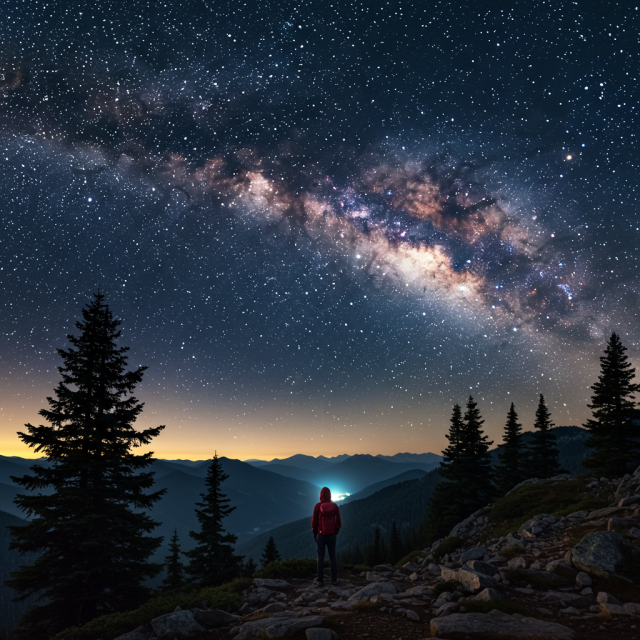Introduction
Imagine escaping city lights and standing beneath an expanse of impossibly bright stars. Dark Sky Travel has emerged as one of the most transformative travel experiences for nature lovers, science enthusiasts, and photographers alike. In this comprehensive guide, you’ll learn what dark sky tourism is, why it matters, and how to plan an epic stargazing adventure at some of the world’s most spectacular night-sky destinations.
What Is Dark Sky Travel?
Dark Sky Travel, also known as astro tourism, focuses on visiting designated Dark Sky Reserves, Parks, and Sanctuaries where artificial light pollution is minimized. These locations are governed by strict lighting regulations to preserve pristine night-sky conditions. Travelers can enjoy unparalleled views of the Milky Way, meteor showers, and celestial events like planetary alignments and eclipses.
Why Stargazing Matters
Beyond its sheer beauty, stargazing connects us to the universe in profound ways. Scientific studies show that exposure to dark skies can reduce stress, improve sleep patterns, and foster a sense of wonder. For communities, dark sky parks boost eco-tourism and support local economies. As artificial lighting grows worldwide, preserving night-sky heritage has become both an environmental cause and a travel trend.
Top Stargazing Destinations Around the Globe
From high-altitude deserts to island sanctuaries, these premier spots offer astronomic clarity and breathtaking panoramas.
1. Aoraki Mackenzie International Dark Sky Reserve, New Zealand
Nestled in the South Island’s Mackenzie Basin, this reserve boasts some of the darkest skies on Earth. Visitors can stargaze at Mt. John Observatory, join guided tours, or simply camp under the Milky Way. The combination of high altitude, low humidity, and minimal light pollution makes it a top choice for astrophotographers.
2. Cherry Springs State Park, Pennsylvania, USA
Designated an International Dark Sky Park, Cherry Springs is accessible from major East Coast cities. With a public viewing field and weekend star parties led by volunteer astronomers, it’s ideal for beginners. On clear nights, you can spot thousands of stars, nebulae, and even the Andromeda Galaxy with a modest telescope.
3. NamibRand Nature Reserve, Namibia
This private reserve in the Namib Desert offers panoramic desert vistas and unbroken star fields. Luxury eco-camps provide guided stargazing excursions, dinner under the stars, and telescopes hosted by resident astronomers. The desert’s extreme dryness and elevation create unrivaled clarity.
4. Exmoor National Park, United Kingdom
The first Dark Sky Reserve in Europe, Exmoor features rolling moors and coastal cliffs. You can join ranger-led night walks or visit the stone observatory at Twitchen. Autumn’s clear skies reveal seasonal meteor showers, while winter brings dazzling constellations overhead.
5. Pic du Midi Observatory, France
Perched 2,877 meters above sea level in the French Pyrenees, Pic du Midi offers guided visits to its historic observatory dome. Guests experience professional-grade telescopes, a planetarium, and lectures by astrophysicists—perfect for those seeking both luxury and scientific depth.
6. La Palma, Canary Islands, Spain
Known as “La Isla Bonita,” La Palma is one of the world’s premier stargazing islands. Strict lighting ordinances and an international observatory atop Roque de los Muchachos ensure clear, dark skies year-round. Hiking trails lead to isolated peaks where amateur astronomers set up telescopes.
7. Big Bend National Park, Texas, USA
In 2019, Big Bend became an International Dark Sky Park. Its vast desert and rugged mountains host some of the clearest skies in North America. Campgrounds provide unobstructed horizons, and park rangers offer evening sky tours throughout the summer season.
8. Namib-Naukluft National Park, Namibia
Covering part of the Skeleton Coast, this park’s dunes and gravel plains are perfect for remote stargazing. Many lodges incorporate dark-sky principles, allowing guests to experience uninterrupted views of the southern sky without power sources or ambient lighting.
9. Mont-Mégantic National Park, Quebec, Canada
Home to Canada’s first Dark Sky Reserve, Mont-Mégantic features an international astrophysical observatory. Visitors can join night-sky events, rent telescopes at an astronomers’ station, and watch multimedia shows in the park’s cutting-edge planetarium.
10. Uluru-Kata Tjuta Dark Sky Experience, Australia
This desert icon offers Indigenous-led stargazing walks linking Aboriginal astronomy with Western science. With minimal light pollution and spiritual storytelling, you’ll learn Tjukurpa (Dreamtime) star lore as you gaze at the Southern Cross and planets rising over Uluru’s silhouette.
How to Plan Your Dark Sky Journey
Preparation is key to maximizing your night-sky adventure. Start by checking each destination’s best viewing season—often during local dry months or when the moon is new. Book accommodations near the reserve entrance to reduce nighttime driving. Look for guided astro tours that include telescope use, expert narration, and astrophotography lessons. Finally, monitor weather forecasts for cloudless nights, and always have a backup site in case conditions change.
Essential Gear for Night Sky Exploration
While it’s tempting to travel light, stargazing demands specific equipment:
- LED Headlamp with Red Filter: Preserves night vision while navigating trails or adjusting your gear.
- Tripod and Telescope or Binoculars: A stable tripod for long-exposure shots and at least 10×50 binoculars will enhance detail.
- DSLR or Mirrorless Camera: With a wide-angle, fast lens (f/2.8 or faster) for Milky Way shots.
- Warm Clothing: Temperatures drop dramatically at night, even in deserts.
- Star Chart App: Interactive sky maps help you identify constellations and planets in real time.
Astrophotography Tips for Beginners
Capturing the night sky can be intimidating. Use these best practices:
- Manual Mode: Set your camera to manual, with ISO 1600–3200, aperture at its widest, and shutter speed between 15–30 seconds.
- Focus to Infinity: Autofocus fails in low light; switch to manual focus and adjust until stars appear sharp.
- Use the 500 Rule: Divide 500 by your lens focal length to estimate the maximum exposure time before star trails appear.
- Shoot in RAW: Retains maximum detail and dynamic range for post-processing.
- Post-Processing: Use software like Lightroom or free tools such as Darktable to enhance contrast, reduce noise, and bring out faint stars.
Responsible Dark Sky Travel
Protecting night-sky heritage requires mindful behavior. Always stick to designated trails and campsites to avoid disturbing wildlife. Use red-filtered lights, minimize light sources, and never shine powerful beams into the sky. Support local dark sky initiatives by following park guidelines and participating in conservation efforts. Finally, spread the word: advocate for reduced light pollution at home and within your travel community.
Conclusion
Dark Sky Travel offers a rare opportunity to reconnect with the cosmos and rediscover our planet’s beauty after sunset. Whether you’re laying on a desert dune in Namibia or peering through a telescope atop a European mountain, the universe is waiting. Pack thoughtfully, respect local regulations, and prepare to be awestruck. Your ultimate night-sky adventure starts now.














